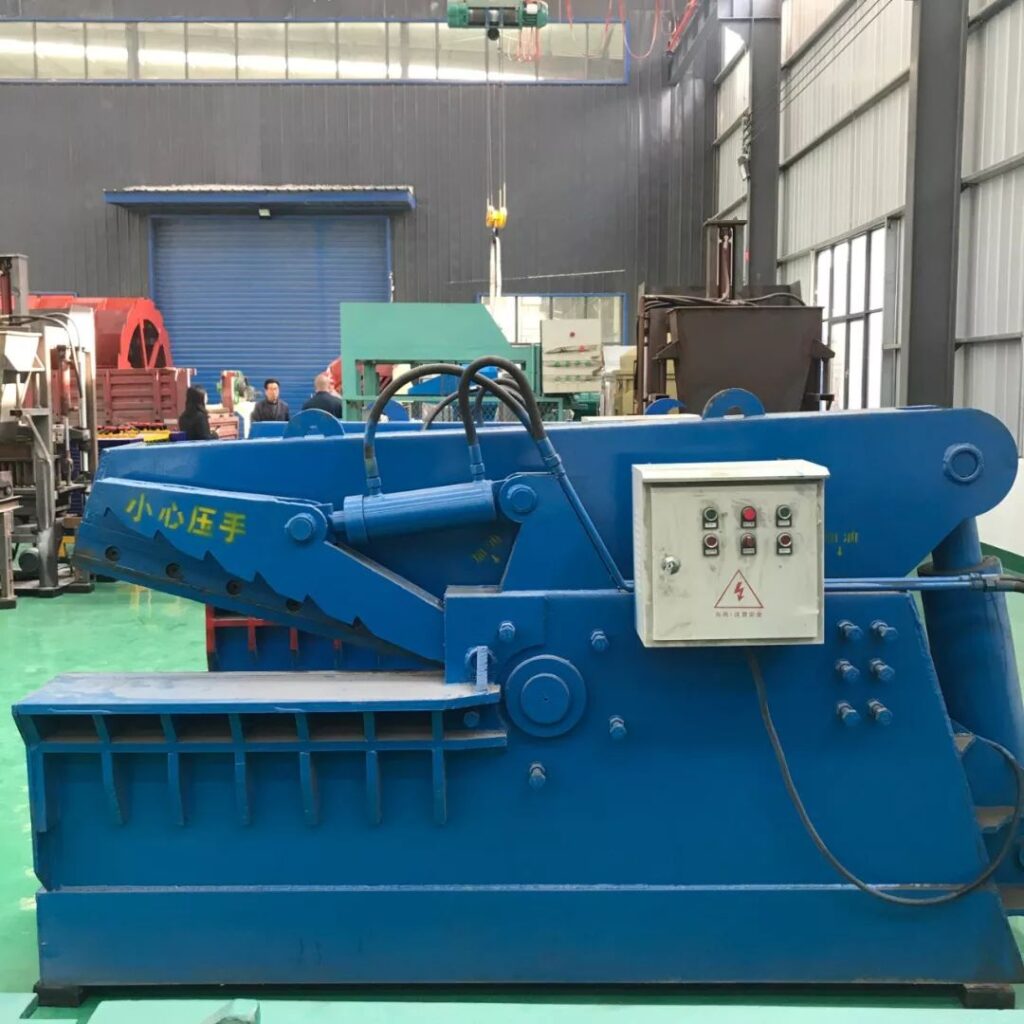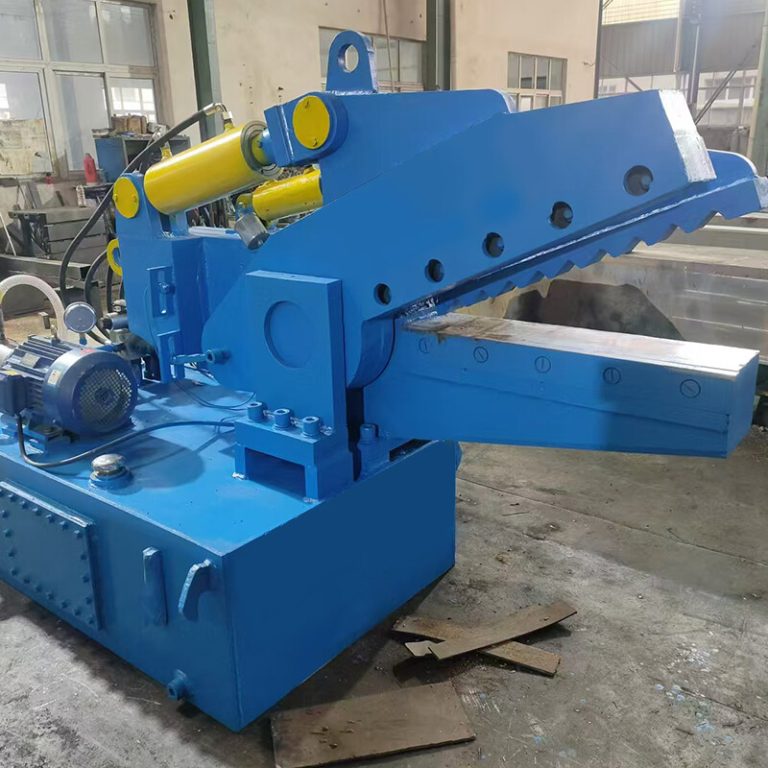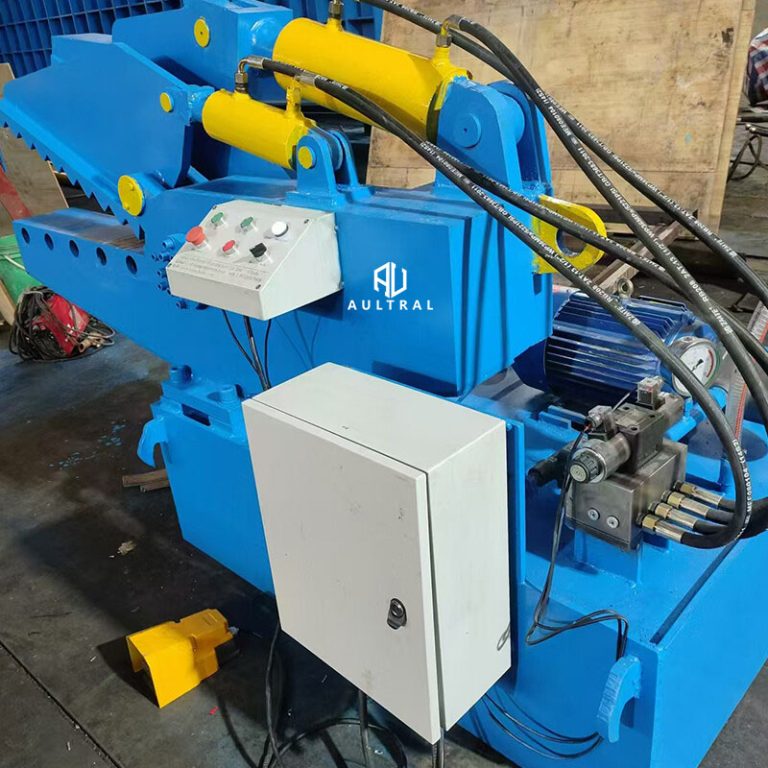What Are Alligator Shears?

Alligator shears, named for their resemblance to the powerful jaws of an alligator, are robust industrial cutting machines designed to slice through tough materials like metal, rebar, wire, and scrap with ease. These shears feature a hinged, crocodile-style blade that crunches down with immense force, making them indispensable in scrap yards, recycling facilities, and metalworking shops. Unlike traditional scissors or guillotine shears, alligator shears use a lever or hydraulic mechanism to generate extreme pressure, allowing them to cut through thick steel bars, pipes, and even tangled metal waste without requiring pre-processing. Their simple yet rugged design includes a fixed lower blade and a moving upper blade that clamps down in a chopping motion, ensuring clean, efficient cuts with minimal effort. Operators value alligator shears for their durability, low maintenance, and ability to handle irregularly shaped materials that other machines might struggle with. Safety features like foot pedals, protective guards, and emergency stops are often integrated to prevent accidents, though proper training is still essential due to the machine’s sheer power. Common applications include recycling scrap metal, preparing materials for melting, demolition work, and even automotive salvage operations. While manual alligator shears exist for smaller tasks, hydraulic or pneumatic models dominate industrial settings due to their ability to cut through thicker materials (up to several inches in diameter) with consistent precision. When choosing an alligator shear, factors like blade material, cutting force, throat depth, and power source (electric, hydraulic, or manual) must be considered to match the machine to the job’s demands. Despite advancements in laser and plasma cutting technologies, alligator shears remain a cost-effective, reliable solution for heavy-duty cutting where speed and brute force outweigh the need for intricate precision. Their versatility and toughness have cemented their place as a go-to tool for anyone dealing with bulk metal processing, proving that sometimes, the simplest solutions are the most effective. Whether you’re a scrap dealer, a construction worker, or a DIY enthusiast tackling large-scale projects, understanding the capabilities of alligator shears can significantly boost productivity and safety in your workflow.
Why Use Alligator Shears?

Alligator shears are a top choice for industries dealing with metal cutting and recycling, and for good reason—their unmatched strength, efficiency, and versatility make them indispensable in scrap yards, demolition sites, and metal fabrication shops. One of the biggest advantages of alligator shears is their ability to cut through thick, tough materials like steel bars, rebar, pipes, cables, and tangled scrap metal with ease, thanks to their powerful hydraulic or pneumatic mechanisms that deliver crushing force in a single motion. Unlike plasma cutters or band saws, which require precise setups and generate heat, alligator shears provide a cold-cutting solution that avoids material distortion, preserving the integrity of the metal for recycling or reuse. Their rugged, low-maintenance design ensures long-term reliability even in harsh working conditions, reducing downtime and repair costs. Operators appreciate the simplicity of alligator shears—no complex programming or skilled labor is needed, just load the material, activate the shear, and let the machine do the heavy work. Safety is another key benefit, as many models come equipped with foot pedals, safety guards, and emergency stop features to minimize the risk of accidents, though proper training remains essential. For scrap metal recyclers, alligator shears are a game-changer, enabling quick processing of bulky, irregularly shaped metals into manageable pieces that fit into furnaces or baling machines, ultimately maximizing scrap value and streamlining operations. Construction and demolition crews rely on these shears to cut through rebar, beams, and other structural metals on-site, saving time compared to torches or manual saws. Even automotive salvage yards use alligator shears to dismantle vehicles, slicing through frames and engine blocks effortlessly. Cost-effectiveness is another major draw—while laser and plasma cutters offer precision, they come with high operational costs and energy consumption, whereas alligator shears deliver brute-force cutting at a fraction of the price. Their adaptability to different materials—from aluminum and copper to hardened steel—makes them a versatile tool for various industries. Whether handling large-scale industrial recycling or smaller metalworking tasks, alligator shears provide a fast, efficient, and economical solution that outperforms many alternatives. In a world where productivity and safety are paramount, these mighty machines prove that sometimes, raw power and simplicity are exactly what’s needed to get the job done right.
How to Use Alligator Shears?

Operating an alligator shear requires proper technique and safety awareness to maximize efficiency while minimizing risks. Before starting, always inspect the machine for damage, ensuring blades are sharp and properly aligned, hydraulic systems are leak-free, and safety guards are in place. Wear appropriate PPE including gloves, safety goggles, steel-toe boots, and hearing protection since metal cutting generates noise and flying debris. Position the material securely in the shear’s throat area, making sure it’s stable and properly aligned with the blade to prevent uneven cuts or machine jamming. For hydraulic models, power on the machine and allow it to reach optimal pressure before initiating cuts. Use the foot pedal or control lever to activate the upper blade, applying steady pressure—never force materials that exceed the shear’s capacity, as this can damage blades or hydraulic components. For thicker metals, make partial cuts and rotate the material if needed rather than attempting a single pass. After cutting, allow the blade to fully retract before removing processed material to prevent pinch hazards. Regularly clear scrap fragments from the work area to maintain cleanliness and prevent tripping hazards. When cutting bundles of rebar or wire, separate them into manageable sizes to avoid overloading the shear. For maintenance, shut off and lock out power before cleaning blades with appropriate solvents and inspecting for wear—replace blades when they show significant dulling or chipping. Lubricate pivot points and hydraulic components as per manufacturer guidelines to ensure smooth operation. Always follow load capacity limits specified in the manual, as exceeding them risks mechanical failure. Troubleshoot common issues like slow blade movement (check hydraulic fluid) or uneven cuts (inspect blade alignment). Remember that alligator shears are designed for straight cuts on metals—never attempt to cut wood, plastic, or other incompatible materials that could damage the machine. For team environments, establish clear communication protocols and never operate the shear while distracted or without proper training. By mastering these operational techniques and prioritizing safety, you’ll extend equipment lifespan, improve cut quality, and maintain a hazard-free workspace while harnessing the full power of your alligator shear for industrial metal processing needs.
